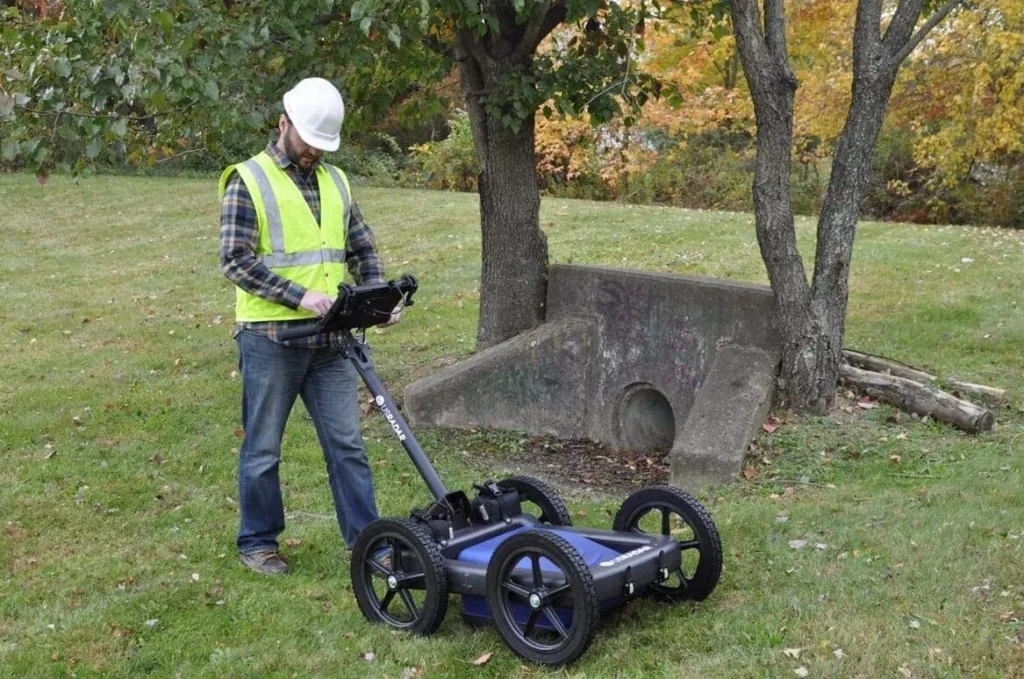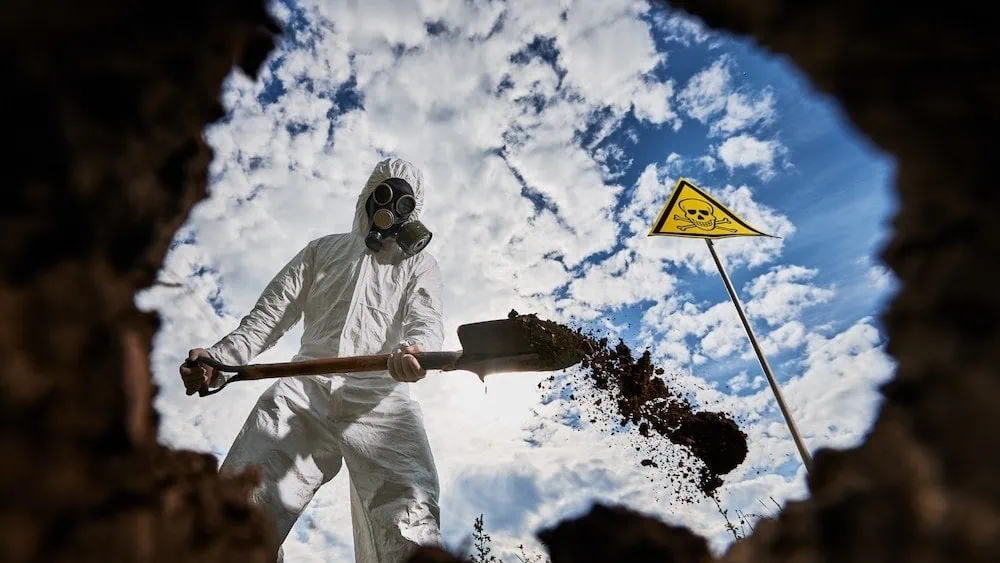Why Locating Underground Pipes Matters
Many experts who work on building, restoration, or excavation projects struggle to locate and map underground pipes. Relying on outdated utility diagrams, incomplete records, or defective detection techniques can lead to errors, delays, and even utility strikes. The stakes are high, whether you are running a residential survey or a major construction project, especially if you are trying to avoid needless ground-breaking.
Ground-penetrating radar (GPR) comes in handy in those situations. Professionals now find underground pipes safely, precisely, and non-invasively thanks to this modern technology, which has transformed their detection of subsurface infrastructure. GPR performs reliably, whether you’re locating metallic pipes, non-metallic pipes, or where installed tracer wiring has failed.
The Challenge of Locating Underground Utility Systems
Beneath the surface of every job site is a complex network of pipes, utility lines, vaults, and sewer systems. Damage to metal pipes, collision with telecom lines, or water line rupture might bring a project to a halt.
Many of these subterranean systems make use of non-metallic pipes, invisible to EM locating systems such as EM locators or cable locators. Identifying these underground utilities is much more difficult when installed tracer wiring is missing or degraded.
That’s where GPR excels.
Why GPR Works for Locating Utilities
Electromagnetic pulses in ground-penetrating radar produce high-resolution images of what is under the surface. A display unit delivers these GPR results in real-time, offering operators a live, visual representation of pipes, voids, asbestos cement concrete storm and sewer systems, and more.
The main advantages of GPR pipe locator systems include:
- Detection of non-metallic pipelines and metal utilities
- Accurate depth and location measurements
- Performs in soil, rock, asphalt, and concrete pads
- Ideal for locating and mapping storm and sewer systems, underground storage tanks, and utilities
- When integrated with GPS,generates shareable data via point files for seamless collaboration
Real-time data at your fingertips allows GPR project managers and field teams to make fast, safe decisions that save time and strengthen project planning.
How GPR Works to Locate Underground Pipes
Through an antenna, ground penetrating radar sends high-frequency radio waves into the ground. Those waves bounce back to the system when they strike a buried object, such as a traditional pipe, void, or metallic pipe, including copper. The display unit shows the reflection data graphically.
Operators use this data to identify:
- Object depth
- Its form and construction (e.g., metallic vs non-metallic pipes)
- Its orientation, such as identifying one pipe or multiple parallel utility lines
GPR is indispensable for detecting underground utility systems in the built world since it has a unique capability to detect cables, non-metallic pipes, and metallic pipes.
Step-by-Step Utility Locate Using GPR
Operators can follow this simple yet highly effective method using a professional-grade device like US Radar’s Quantum Imager:
- Review Site Documentation: To find likely pipe routes or one call marks, refer to any blueprints or utility maps.
- Analyze the Site: A pre-scan walk through of the site will usually reveal some clues of what’s to be expected. Manhole covers, valve covers, splice pits light pole alignments are just a few of the clues to look for.
- What is the Objective?: Once you’ve looked over the site, with the objective of the survey in mind, what data do I need to get the job done?
- Plan Your Scan: Especially in complex locations with subsurface infrastructure, well planned scan pattern to ensure systematic coverage of the site.
- Roll and Read: Roll the GPR system along scanning lines. When a reflection pattern appears, mark the location using flags or paint or save the point if mapping with GPS.
- Repeat and Confirm: Move the system several feet down and scan again. This helps differentiate one pipe from several lines and confirms that it is in fact a pipe or cable as well as confirm it’s direction.
- Post-Processing and Data Exchange: Export GPR results as point files in any number of file extensions or utilize post-processing tools to generate image files and create reports.
What If You Don’t Have Schematics?
If there are no maps or drawings, or you suspect installed tracer wiring is absent, then you can rely on GPR data. Start with larger scanning lines, then narrow in as patterns show up. This approach allows for the thorough locating and mapping of pipes even in uncharted territory.
What Kind of Underground Pipes Can GPR Locate?
Thanks to its versatility, GPR can detect nearly any underground utility, including:
- Metallic pipes, such as cast iron pipes, copper, and steel
- Non-metallic pipes, including PVC, clay, and plastic water lines
- Sewer systems, storm and sewer systems, and asbestos cement concrete storm and sewer systems
- Telecom lines, cables, and water lines
- Underground storage tanks, both operational and failed underground storage tanks
In short, GPR can probably find anything buried. For those professionals involved in utility mapping, finding underground pipes, and lowering utility strikes, this makes it the ideal solution.
Understand the Limitations of GPR
Environmental and Material Challenges
Though strong, GPR has certain limitations:
- High dielectric characteristics of wet or saturated soil, such as clay, can weaken signal strength
- Dense concrete pads or reinforced areas might disperse signals
- Extremely deep targets could be more difficult to find without appropriate frequency antennas but remember, you lose resolution for depth
Turning Limitations Into Opportunities
Sometimes these “limitations” reveal quite significant hints. For instance, distortions in the readings might point to a previous excavation, sinkhole, burst water line, or crumbling infrastructure. Users can learn to understand these anomalies for proactive planning with appropriate field training.
Training and Support Will Helps You Master GPR
Proper training can help you get the most from your GPR equipment. Personalized field training is always available at US Radar to teach teams how to:
- Analyze GPR results with confidence
- Avoid false signals from the surrounding subsurface infrastructure
- Use post-processing technologies for clearer insights
- Combine GPR data with CAD, GIS, and utility mapping platforms
Trained experts on-site will enable your crew to provide accurate, quick scans over any surface or location.
Transform Your Utility Locate with US Radar
Ground-penetrating radar systems have been developed at US Radar for more than 30 years. Designed for the field, not the lab, our instruments empower professionals to work more precisely, safely, and effectively.
Our GPR solutions assist you regardless of your position—GPR project managers, surveyor, engineer, or construction foreman—to:
- Avoid utility strikes
- Precisely locate utilities
- Improve project planning
- Reduce risk and save time
- Visualize and map metallic and non-metallic pipes, even under difficult circumstances
From small-scale projects to full-site evaluations, our solutions scale with your needs, and our global network of support means you’re never alone on the job.
Whether you’re tackling a challenging site or need to locate utilities where installed tracer wiring has degraded, GPR remains the most versatile tool available. It’s ideal for avoiding costly delays and improving safety when locating underground pipes, sewer systems utilities, and more.
Ready to find out how GPR can transform your next utility locate?
Contact US Radar today to speak with a GPR expert.






